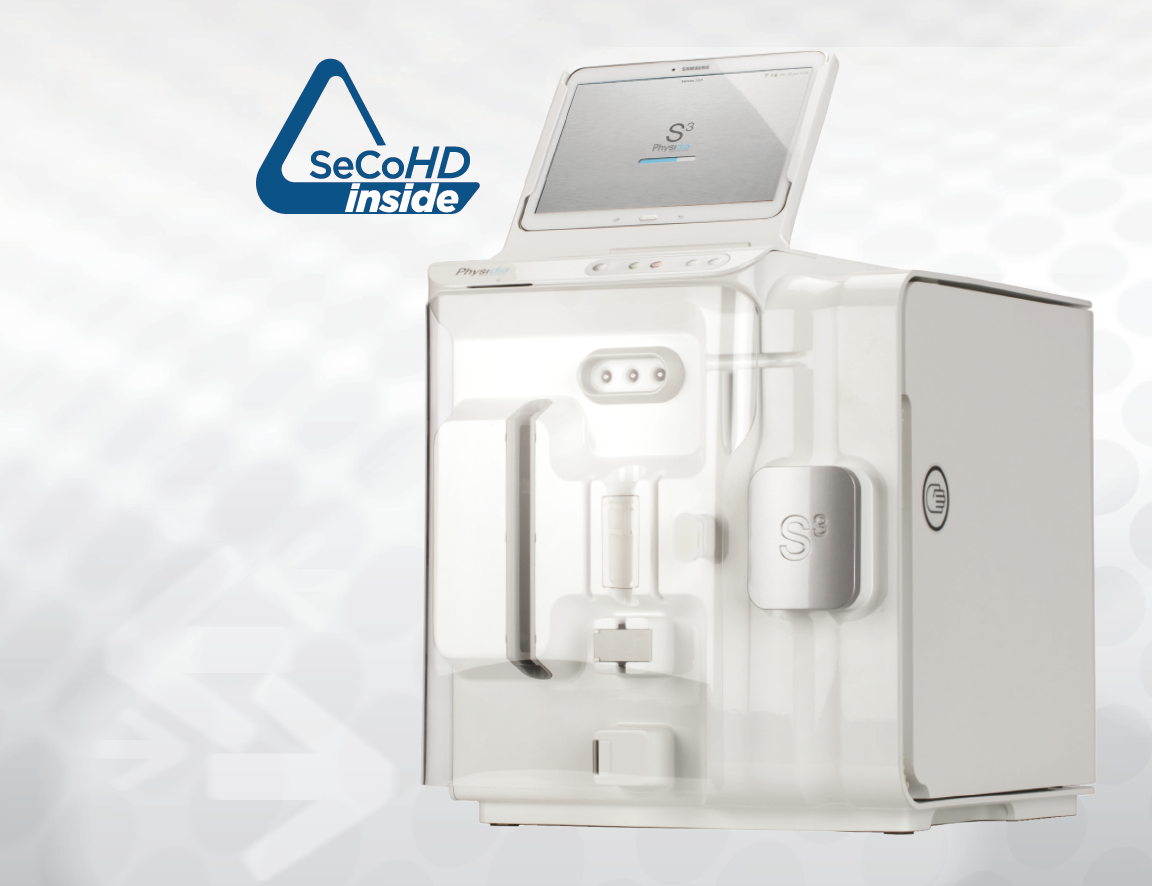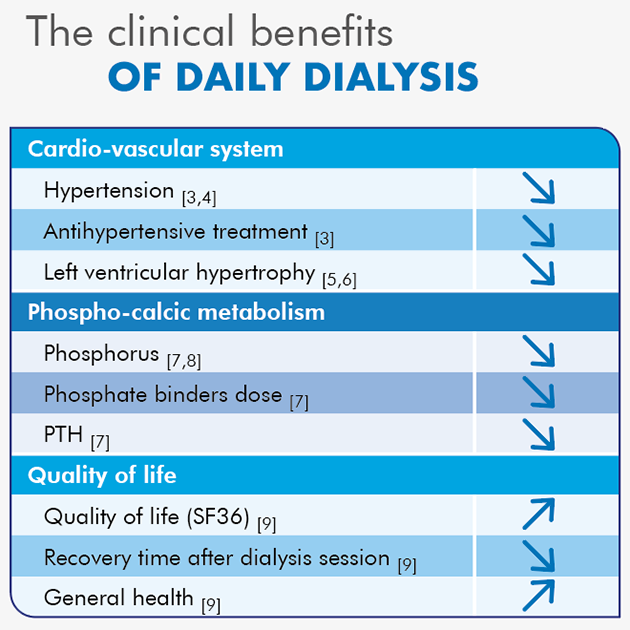
Benefits of daily home haemodialysis
The latest monitors, which are compact and user-friendly, make this technique perfectly safe in the home environment. The Physidia monitor allows short daily treatment (2 hours or 2,5 hours), offering a more physiological therapy that is easier to tolerate for the patient.


Why opt for daily home haemodialysis?
Daily haemodialysis is easy to integrate into the daily life of the patient and offers an advantage in terms of quality of life and independence.
A GREATER FEELING OF WELLBEING
The positive effects of more frequent dialysis treatments include removal of fluids and accumulated toxins. Daily haemodialysis reduces tiredness and the risk of cardio-vascular complications, and leads to a better tolerance of the sessions.
• Daily haemodialysis improves the physical performance of a patient, which amounts to a feeling of wellbeing on a daily basis
QUALITY OF LIFE
Daily home haemodialysis with 2H or 2,5H sessions allows rapid recovery between dialysis sessions and reduces tiredness associated with renal failure.
• Daily dialysis at home is particularly suited to those who wish to pursue their professional activity, keep active on a daily basis and preserve their quality of life.
STAYING INDEPENDENT
– The patient schedule his own dialysis, retaining the freedom to carry out the treatment at a time to suit himself
– The patient does not need transportation to the dialysis centre, saving him precious time,
– The patient is free to organise holidays without disrupting the treatment thanks to the portability of the equipment.
Bibliographical references
[1] B. Canaud, Néphrologie & Thérapeutique (2009) 5, 218—238 • [2] T. L. Sirich et al, Kidney International (2017) 91, 1186–1192 • [3] G.Nesrallah et al, Am. J. Kidney Dis. 2003 Jul; 42(1 Suppl) : 13-7. • [4] P. Susantitaphong et al, J Kidney Dis. 2012 May ; 59(5): 689–699 • [5] G. M. Chertow et al, N Engl J Med 2010;363:2287-300. • [6] C.T. Chan et al, Circ Cardiovasc Imaging. 2012 March 1; 5(2) : 251–261 • [7] G. Steven et al, Kidney International, Vol. 67, Supplement 95 (2005), pp. S28–S32 • [8] J. Zaritsky et al, Nephrol Dial Transplant (2014) 29: 437–441 • [9] A. X.Garg et al, Kidney International (2017) 91, 746–754. • [10] K. Lee, Expert Rev. Med. Devices 2013; 10(5), 611–620.
